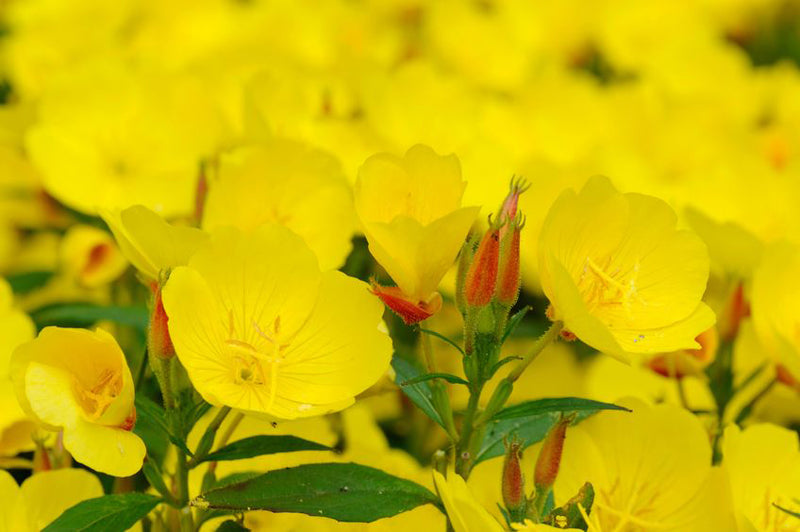Evening primrose (Oenothera tetragona)
The evening primrose belongs to the evening primrose family and is a true perennial bloomer. This long-lived wild perennial not only looks great in open borders and on patios, but is also a popular cut flower for vases. Particularly beautiful flowerbed combinations are created with sage, speedwell, sneezeweed, daisies, and other summer bloomers. Evening primrose oil is widely used in cosmetics and is an ingredient in many ointments and creams. It is said to help with neurodermatitis and allergies. An evening primrose bath stimulates both the metabolism and circulation, leaving the skin pleasantly soft and supple.

Growth form:
The evergreen wild perennial grows upright, bushy and forms clumps.
Its stems are branched, and it reaches a height of 60 cm. The approximately 8 cm long leaves are ovate, toothed, and blue-dark green with a slight, deep purple shimmer.
Blossom:
The flowering period begins in June and lasts well into August. The intense lemon yellow or warm golden yellow flowers develop from reddish buds. The approximately 2.5 cm wide, wide-open flower cups are densely packed in large numbers in the leaf axils of the stems.
Location requirements:
Evening primrose requires more or less nutrient-rich, well-drained, moist to occasionally dry soil in full sun. Occasional shade is generally not a problem. The perennial should be planted in groups of 3–5 plants. 6–12 plants are needed per square meter.
Care:
This wild perennial is very easy to care for and virtually disease-free. To encourage growth and flowering, you can fertilize your evening primrose lightly each spring. After flowering, the perennial should be cut back to about a hand's width above the ground to encourage healthy new growth and maintain flowering. This also prevents excessive self-seeding. Waterlogging should be avoided at all costs, as this leads to root rot and subsequent death. However, during extended dry periods, watering is recommended. Watering in the morning or evening is recommended.
Recommended and special varieties:
'Firework' or 'Firework'
This particular variety reaches a height of 45 cm and has yellow flowers approximately 5 cm wide, with striking red buds. Its leaves have a purplish-brown tinge.
'High Light' Glows at dusk with light yellow flowers and reaches a height of 60 cm.
'Sonnenwende' It also reaches a height of 60 cm and impresses with its golden yellow flowers and reddish leaves.
'Golden Crick' This variety remains relatively small at 30 cm tall, but its cute little flowers appear in abundance.
'Camel' The leaves of this particular variety are very interesting. They are orange when they first emerge, and later turn green with decorative yellow spots.
'African Sun' Reaches a height of 30 cm and produces many yellow flowers and thin, slender leaves.








































































































